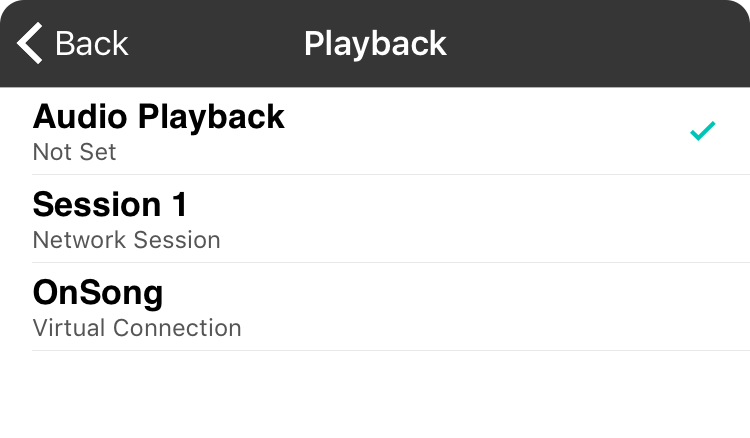User Manual
Playback

When OnSong plays MIDI files as if they were audio files, it must forward MIDI events to a destination in order for the MIDI information to be synthesized into sound. OnSong does not include a synthesizer or sampler to convert MIDI into sound. This is because there are scores of great music apps available that can make the sound you need.
Choose a MIDI destination from the list where OnSong should forward MIDI events for playback.
Audio Playback
The default option is to have no destination set for MIDI playback. This causes iOS to handle the MIDI events and s synthesize the sound directly if support. Default.
Direct Connections
CoreMIDI can be connected to physical MIDI hardware using various MIDI adapters, Bluetooth dongles or USB. Each connection will appear in this list if available.
Network Sessions
CoreMIDI supports MIDI sessions that are configured on the WiFi network. You can set up a MIDI network session on Mac OS X. Some MIDI manufacturers also make products that set up network MIDI sessions. See video tutorials on MIDI for more information.
Virtual Connections
Most MIDI-enabled apps can be configured as act as a virtual MIDI destination. This makes the app appear as another MIDI port that can be communicated with directly. This is especially useful for MIDI playback since you may want to target one app in particular.


